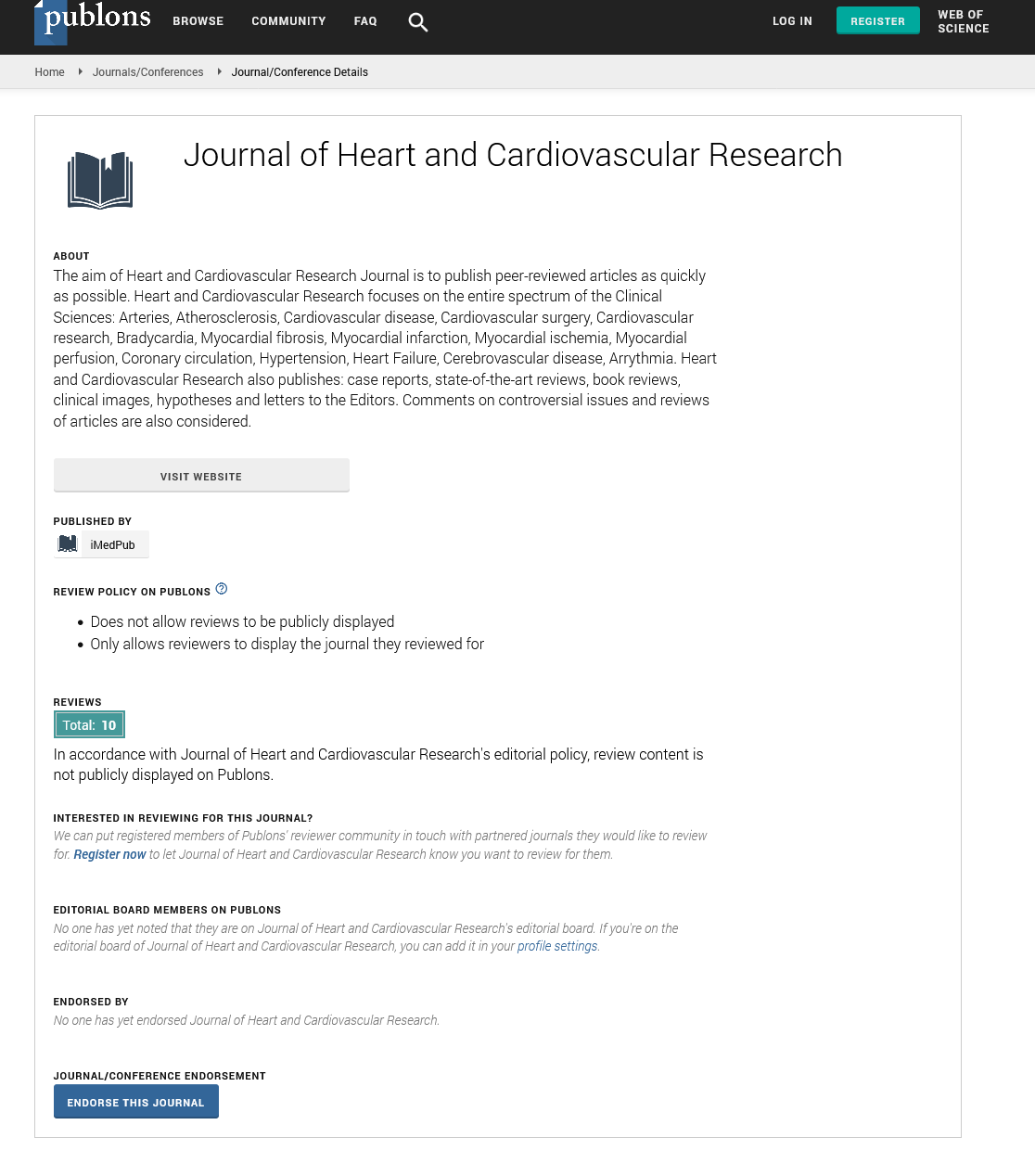ISSN : ISSN: 2576-1455
Journal of Heart and Cardiovascular Research
Abstract
Heart Congress 2019: Potential pleiotropic effects of SGLT2- and DPP4- inhibitors, lessons learnt from rodent models - Yochai Birnbaum - Baylor College of Medicine
Introduction & Aim: Clinical trials have suggested that SGLT-2 inhibitors improved cardiovascular outcomes in patients with diabetes mellitus. We assessed whether the SGLT-2 inhibitor Dapagliflozin (Dapa) attenuates the upregulation of the cardiac Na+/H+ exchanger (NHE-1) in vitro in mouse cardio-fibroblasts stimulated with Lipopolysaccharides (LPS) and whether this effect is dependent on Adenosine Mono Phosphate Kinase (AMPK) activation. Type 2 diabetes expands the danger of cardiovascular ailment . Control of glucose is viewed as main goal in the treatment of type 2 diabetes. In addition, it is notable that keeping up suitable body weight, pulse, and renal capacity of patients is additionally pivotal for the decrease of cardiovascular hazard in patients with type 2 diabetes. In particular, diabetes patients with liver ailment because of metabolic variations from the norm might be related with danger of cardiovascular occasions ]. In ongoing decades, a few new medications of various restorative classes have been brought into diabetes treatment, yet the utilization of sodium glucose cotransporter 2 (SGLT2) inhibitors and dipeptidyl peptidase-4 (DPP4) inhibitors has expanded considerably , conceivably in light of their good reaction profiles. The administration of type 2 diabetes requires multi-factorial contemplations past glycemic controls. As previously mentioned, patients' body weight, pulse, hepatic and renal capacities might be related with cardiovascular results. SGLT2 inhibitors have indicated more noteworthy decreases of cardiovascular occasion dangers than DPP4 inhibitors , whereby potential components may include the better pleiotropic impacts of SGLT2 inhibitors. Method: Mouse cardiofibroblasts were exposed for 16 hours to Dapa (0.4 ?M), AMPK activator [A769662 (10 ?M)], AMPK inhibitor [compound C (CC) (10 ?M), an SGLT1 and SGLT2 inhibitor [Phlorizin (PZ) (100 ?M)], Dapa+CC or Dapa+PZ and then stimulated with LPS (10 ng/ml) for 3 hours. NHE-1 mRNA levels were assessed by rt-PCR and total AMPK, phosphorylated-AMPK (P-AMPK), NHE-1 and Heat Shock Protein-70 (Hsp70) protein levels in the whole cell lysate by immunoblotting. In addition NHE-1 protein levels attached to Hsp70 were assessed by immuno precipitation. Result: Exposure to LPS reduced P-AMPK levels. A769662 and Dapa equally increased P-AMPK. The effect was blocked by CC. Phlorizin had no effect on P-AMPK. LPS exposure significantly increased NHE-1 mRNA levels. Both Dapa and A769662 equally attenuated this increase. The effect of Dapa was blocked with CC. LPS significantly increased the concentration of NHE-1 attached to Hsp70. Both Dapa and A69662 attenuated this association and CC blocked the effect of Dapa. Again, Phlorizin had no effect and did not alter the effect of Dapa. Conclusion: Dapa increases P-AMPK in cardiofibroblasts exposed to LPS. Dapa attenuated the increase in NHE-1 mRNA and the association between NHE-1 and Hsp70. This effect was dependent on AMPK.
This work
Author(s): Yochai Birnbaum
Abstract | PDF
Share This Article
Google Scholar citation report
Citations : 34
Journal of Heart and Cardiovascular Research received 34 citations as per Google Scholar report
Journal of Heart and Cardiovascular Research peer review process verified at publons
Abstracted/Indexed in
- Google Scholar
- Sherpa Romeo
- China National Knowledge Infrastructure (CNKI)
- Publons
Open Access Journals
- Aquaculture & Veterinary Science
- Chemistry & Chemical Sciences
- Clinical Sciences
- Engineering
- General Science
- Genetics & Molecular Biology
- Health Care & Nursing
- Immunology & Microbiology
- Materials Science
- Mathematics & Physics
- Medical Sciences
- Neurology & Psychiatry
- Oncology & Cancer Science
- Pharmaceutical Sciences
